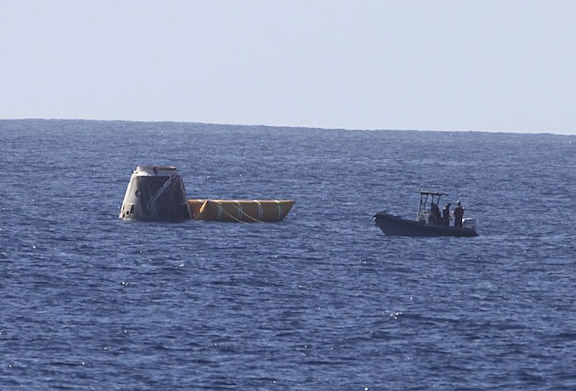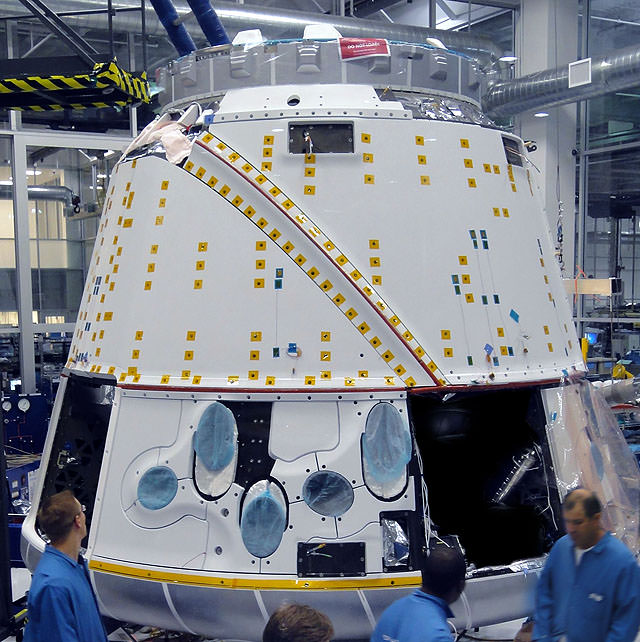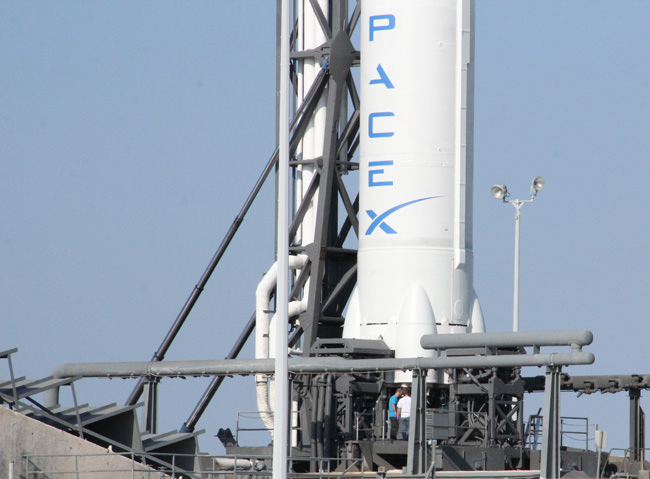Dragon Capsule Has Reached Orbit
4 June 2010 2:55 p.m. EDT
Falcon 9's second stage engines have shut down and its mock Dragon 9 capsule has reached orbit.
Falcon 9 First Stage Separates
4 June 2010 2:50 p.m. EDT
Falcon 9's first stage has separated from the second stage, which will continue traveling to space.
LIFTOFF! Falcon 9 Launches
4 June 2010 2:46 p.m. EDT
SpaceX has lifted off its Falcon 9 rocket on its inaugural flight.
Falcon 9 Could Launch at 2:45 PM
4 June 2010 2:17 p.m. EDT
A new launch target time for SpaceX's Falcon 9 rocket has been set for 2:45 p.m. EDT (1845 GMT).
"Everything looks good for a reset and another launch attempt today," SpaceX commentator Robyn Ringuette said.
SpaceX May Try Again to Launch Falcon 9 Today
4 June 2010 2:07 p.m. EDT
A new launch target time has not been set yet, but SpaceX says it still has time to recycle the countdown and try again to launch its first Falcon 9 flight.
Last-Minute Abort for Falcon 9
4 June 2010 1:33 p.m. EDT
SpaceX aborted its planned launch test of Falcon 9 when a glitch showed up at the very last minute. There could still be a chance to try again today, SpaceX said.
Falcon 9 Go for Launch
4 June 2010 1:13 p.m. EDT
The countdown has resumed toward a launch for Falcon 9 at 1:30 p.m. EDT.
Falcon 9 to Launch No Earlier Than 1:30 PM
4 June 2010 1:07 p.m. EDT
SpaceX is now aiming for a launch of its Falcon 9 no earlier than 1:30 p.m. EDT, allowing time for a boat that had strayed dangerously close to be moved clear to safety.
Stray Boat Further Stalls Falcon 9 Launch
4 June 2010 12:56 p.m. EDT
A boat has apparently strayed too close to the Falcon 9 launch pad, further stalling the planned liftoff.
Falcon 9 Now Aiming for 1 PM Launch
4 June 2010 12:42 p.m. EDT
SpaceX is working to resolve the telemetry issue for a possible 1 p.m. EDT launch time. The weather remains go for launch.
SpaceX Troubleshooting Blocked Signal
4 June 2010 12:22 p.m. EDT
SpaceX is trying to sort through an issue with the information coming from its Falcon 9 rocket. The strongback structure on the launch pad has been clocking telemetry signals from the vehicle, the company said, so SpaceX is troubleshooting that issue now.
Click here for
launch commentary from Spaceflight Now.
First Falcon9 Launch Temporarily Stalled
4 June 2010 12:01 p.m. EDT
Commercial rocket firm SpaceX is still holding in the countdown to launch its Falcon 9 for the first time. The rocket is fully loaded with its liquid oxygen and liquid kerosene fuel.
"Weather continues to be favorable for our launch today," SpaceX commentator Robyn Raguette said. "We are still waiting for our new T-zero time."
Falcon 9 Holding at T-15
4 June 2010 11:30 a.m. EDT
The inaugural flight of the Falcon 9 rocket is still holding at T-15 minutes. SpaceX commentator Robyn Raguette says the range has asked them to hold to check telemetry. The rocket and weather are currently in green, or "go" conditions.
Falcon 9 Liftoff Time Pushed Back
4 June 2010 11:23 a.m. EDT
SpaceX has pushed back the planned liftoff time of its Falcon 9 rocket, which was slated to launch at 11:20 a.m. EDT. The range is asking the company to hold while they check out telemetry connections. The countdown is currently holding at T-15 minutes.
Countdown Underway for First Launch of Private Rocket
4 June 2010 11:06 a.m. EDT
The countdown is underway for the first launch of SpaceX's Falcon 9 rocket today. Weather forecasters predict a 60 percent chance of favorable weather for the flight.
SpaceX Prepares to Launch Private Rocket for First Time
4 June 2010 10:56 a.m. EDT
Private company SpaceX is preparing to launch its Falcon 9 rocket on its maiden launch test this morning at 11:20 a.m. EDT (1520 GMT). The company has a four-hour window in which to launch.















